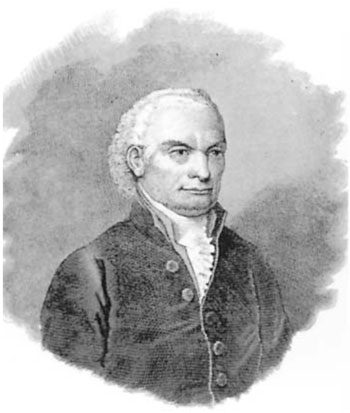
Domenico Cotugno
During a period of over 40 years Domenico Cotugno served as professor of anatomy at the University of Naples, one of the oldest institutions of higher learning in the world, founded by the Holy Roman Emperor Frederic II in 1224. His academic career was marked by several important advances for which he is remembered today, and he is often quoted in journals of neurology, nephrology, and otolaryngology.1, 2
Before pursuing a medical education, he had studied Latin, philosophy, mathematics, physics, and biology. During his long career he remained an outstanding example of the physician humanist or “compleat” physician, maintaining an interest in the classics, collecting books, studying numismatics, architecture, and antiquities, and accumulating an extensive library.2
Born into a poor family, he struggled to acquire an education, graduating in medicine from the University of Salerno in 1756. He subsequently became successful and prosperous. In his will he left 100,000 ducats, a significant amount in those days, to the hospital for the chronically ill in Naples. Both in Bari and in Naples hospitals are still named in his honor.
In 1789 Cotugno accompanied King Ferdinand IV of Naples to Austria and Germany and was later appointed royal physician in 1808. He married Ippolita Ruffo, Duchess of Bagnara, in 1794, who after his death destroyed many of his papers and manuscripts. She is reported to have been an unsuitable woman of good family “whose peculiar mixture bigotry, prodigality, and stupidity made her detestable.”2
Cotugno is credited with the discovery of the circulation of the cerebrospinal fluid. To study it he decapitated cadavers and stood them on their feet to observe its flow. He described hydrocephalus and also noted that the cerebrospinal fluid was incoagulable in health but became cloudy on boiling from the precipitation of protein.3 He made similar observations with regards to a 28-year-old soldier who presented with severe swelling, finding that the urine also became cloudy on boiling—now regarded as one of the early descriptions of the nephrotic syndrome, the protein-losing kidney associated with various forms of glomerulonephritis.3
In the field of otolaryngology, Cotugno provided one of the earliest anatomical descriptions of the inner ear. He described the existence of labyrinthine fluid and formulated a theory of resonance and hearing. In his neurologic studies he described the course of the nasal palatine nerve and its role in sneezing. In the report of his studies on patients with sciatica he postulated that acrid fluid penetrated the sheaths of the sciatic nerve, thus causing pain in the back and radiating down the leg.4 He also investigated smallpox and worked on controlling the spread of pulmonary tuberculosis.
He stopped lecturing in 1814, suffering a stroke in 1818 and again in 1822. He died in that year at the age of 86. In the history of medicine he is remembered as one of its great investigators and innovators.
Notes
- F. P. Schena, Am J Nephrol 14 (1994): 325–329.
- F. P. Schena, Nephrol Dial Transplant 9 (1994):1344–1345.
- D. Black, J R Soc Med 73 (1980): 514–518.
- Ermanno Manni, J Hist Neurosciences 6 (1997):124–132.

Leave a Reply